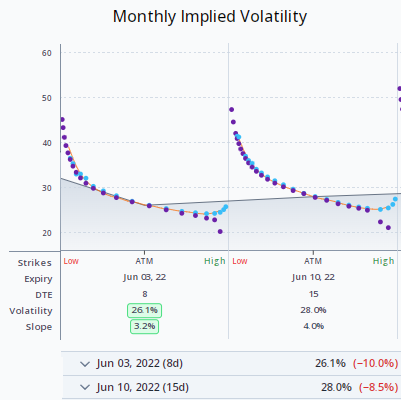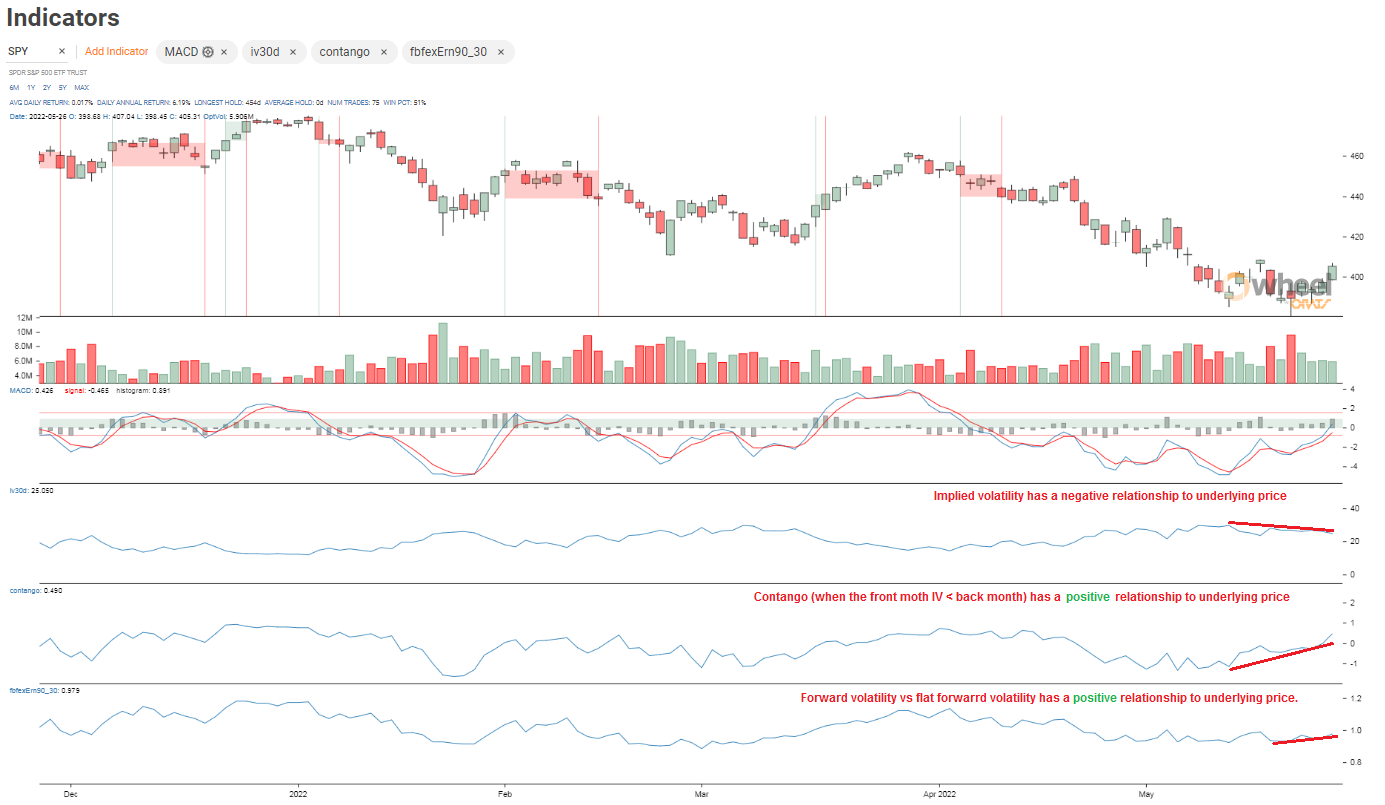Indicators
Wednesday, March 13th 2019
Forward Volatility: The Future Is Now
Forward volatilities foretell important things about the future of implied volatility and historical volatility.
Summary
Forward volatility is a measure of future implied volatility. Calculating the forward or future volatility over a period of time can expose anomalies in the term structure and provide insight into the movement of the underlying instrument. ORATS calculates forwards using neighboring constant maturity implied volatilities and also calculates flat forwards. The ratio of flat forward to forward is a good signal for foreshadowing movement in the underlying instrument. ORATS also calculates forwards based on the ex-earnings implied volatility skew.
Forward volatility is a measure of future implied volatility.
But how can you know the future?
Ask the term structure of implied volatilies!

You calculate the forward or future volatility over a period of time by extracting the IV at the beginning of the period and the end of period. ORATS calculates forwards using the neighboring constant maturity implied volatilities 20, 30, 60, 90 and 180 days and also for the 30 to 90 day period.
Calendar pricing can be normalized by using a this forward volatility calculation. The forwards can then expose anomalies in the term structure, which month is too high and which too low.
For example, assume the implied volatility 20 days to expiration was 9.1% and the 30 day IV was 9.6%. Logically, if the volatility was 9.1% for 20 days, in order for the 30 days to be worth 9.6%, for the 10 days after the 20 days and before the 30 days the stock would have to move more than 9.6% in order to move the average up to that number. Make sense? The calculation for the standard forward volatility finds this ten-day forward volatility to be 10.5%.
There is another way to calculate forward volatilities; we call Flat Forwards, that is a bit more involved but yields a measurement of 11.7% for the same period as above.
Interestingly, in low volatility periods, we have found the flat forward to be higher than the regular forward. In high volatility periods the flat is lower than the regular forward.
We have found that the ratio of the flat forward to the forward is a good signal for foreshadowing movement in the underlying instrument. We found the lower this measurement, the worse things will be for the market going forward, i.e. < 1 is bad. More on this signal in another post.
Another important twist at ORATS is that we also calculate forwards based on the ex-earnings implied volatility skew. In ex-earnings IV ORATS removes the implied volatility attributable to earnings announcement. Since ETFs do not have earnings announcements their forwards do not have ex-earnings effects.
Disclaimer:
The opinions and ideas presented herein are for informational and educational purposes only and should not be construed to represent trading or investment advice tailored to your investment objectives. You should not rely solely on any content herein and we strongly encourage you to discuss any trades or investments with your broker or investment adviser, prior to execution. None of the information contained herein constitutes a recommendation that any particular security, portfolio, transaction, or investment strategy is suitable for any specific person. Option trading and investing involves risk and is not suitable for all investors.
All opinions are based upon information and systems considered reliable, but we do not warrant the completeness or accuracy, and such information should not be relied upon as such. We are under no obligation to update or correct any information herein. All statements and opinions are subject to change without notice.
Past performance is not indicative of future results. We do not, will not and cannot guarantee any specific outcome or profit. All traders and investors must be aware of the real risk of loss in following any strategy or investment discussed herein.
Owners, employees, directors, shareholders, officers, agents or representatives of ORATS may have interests or positions in securities of any company profiled herein. Specifically, such individuals or entities may buy or sell positions, and may or may not follow the information provided herein. Some or all of the positions may have been acquired prior to the publication of such information, and such positions may increase or decrease at any time. Any opinions expressed and/or information are statements of judgment as of the date of publication only.
Day trading, short term trading, options trading, and futures trading are extremely risky undertakings. They generally are not appropriate for someone with limited capital, little or no trading experience, and/ or a low tolerance for risk. Never execute a trade unless you can afford to and are prepared to lose your entire investment. In addition, certain trades may result in a loss greater than your entire investment. Always perform your own due diligence and, as appropriate, make informed decisions with the help of a licensed financial professional.
Commissions, fees and other costs associated with investing or trading may vary from broker to broker. All investors and traders are advised to speak with their stock broker or investment adviser about these costs. Be aware that certain trades that may be profitable for some may not be profitable for others, after taking into account these costs. In certain markets, investors and traders may not always be able to buy or sell a position at the price discussed, and consequently not be able to take advantage of certain trades discussed herein.
Be sure to read the OCCs Characteristics and Risks of Standardized Options to learn more about options trading.
Related Posts



